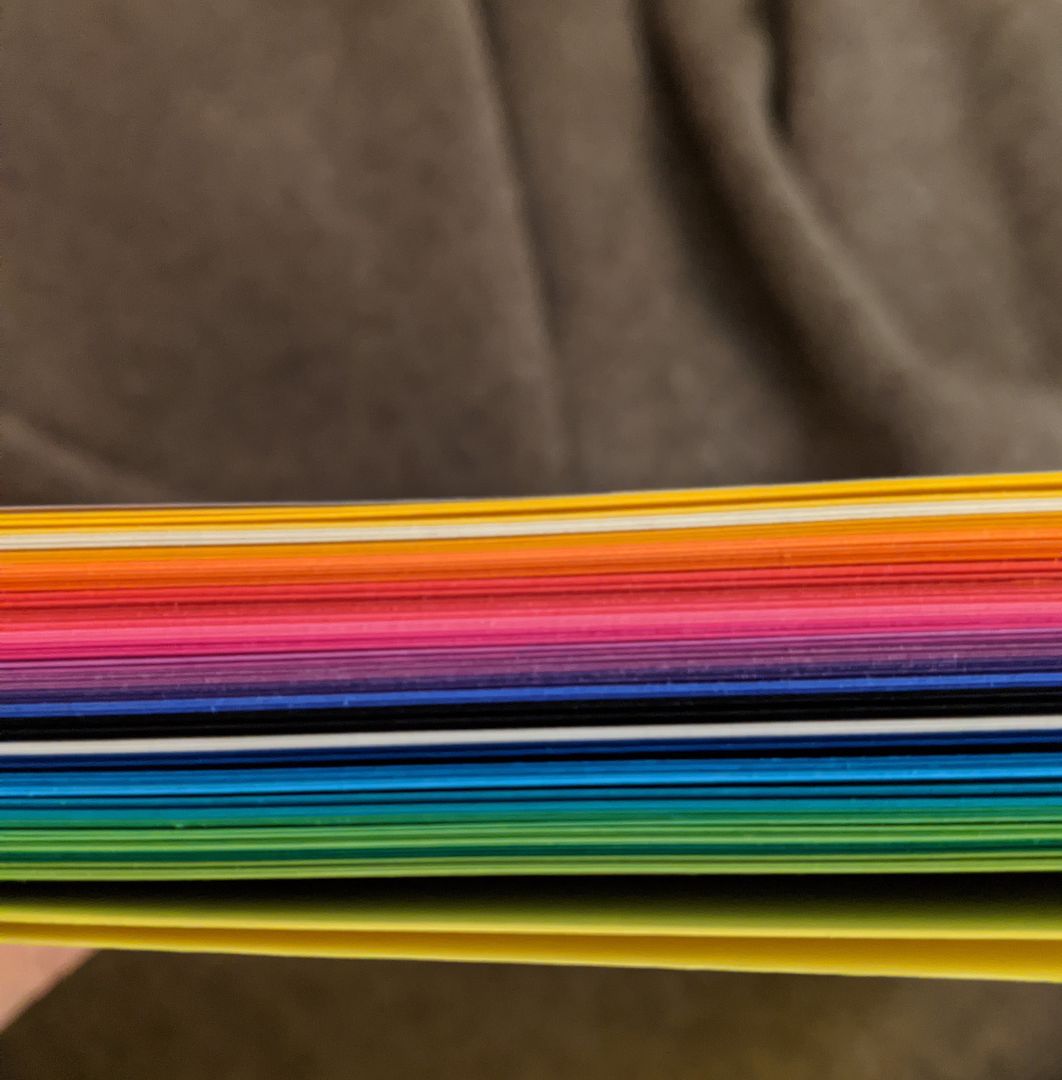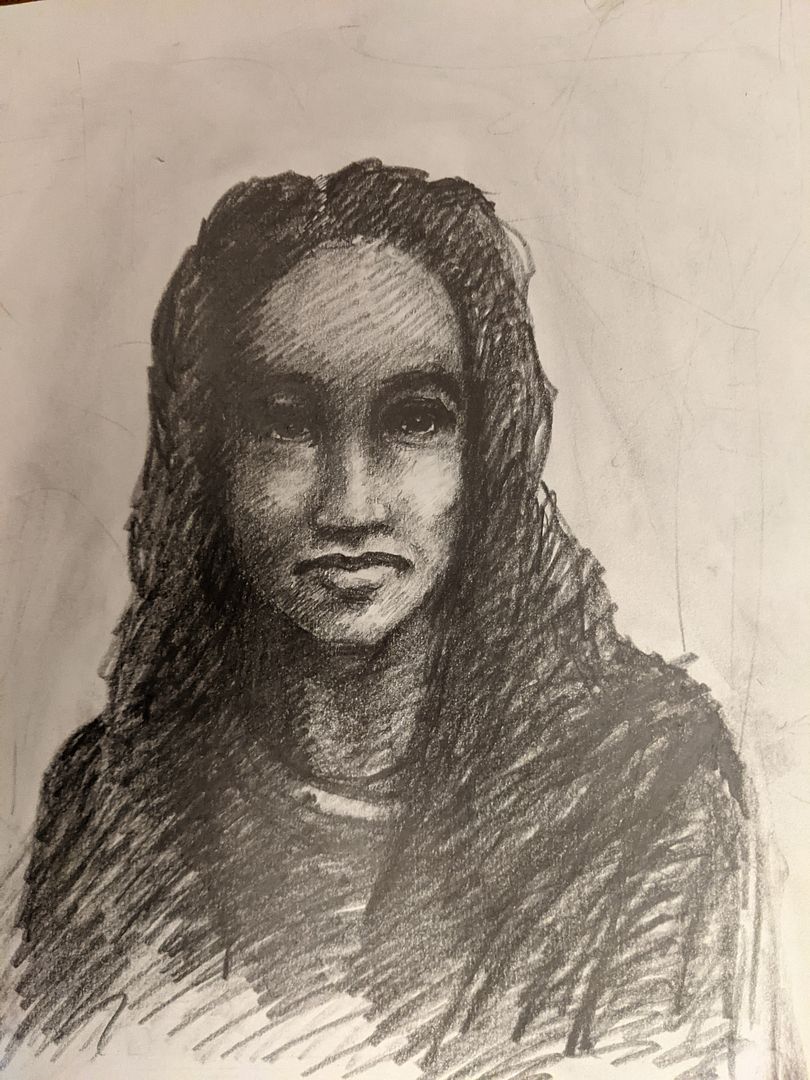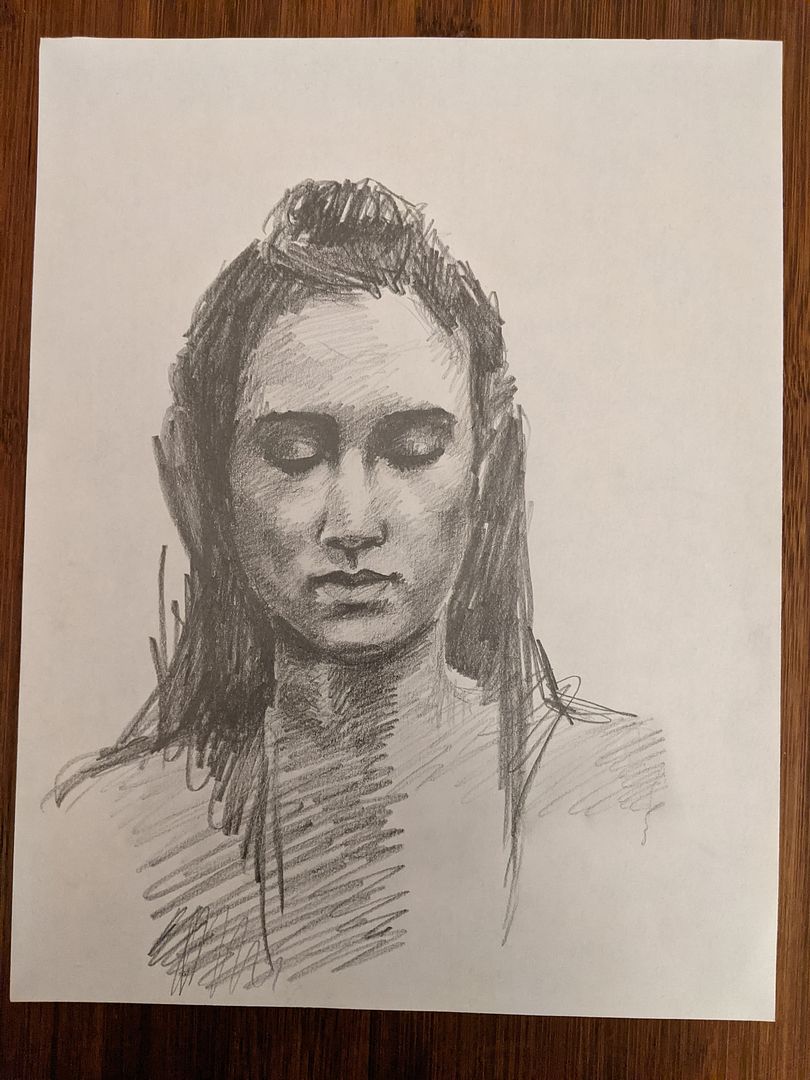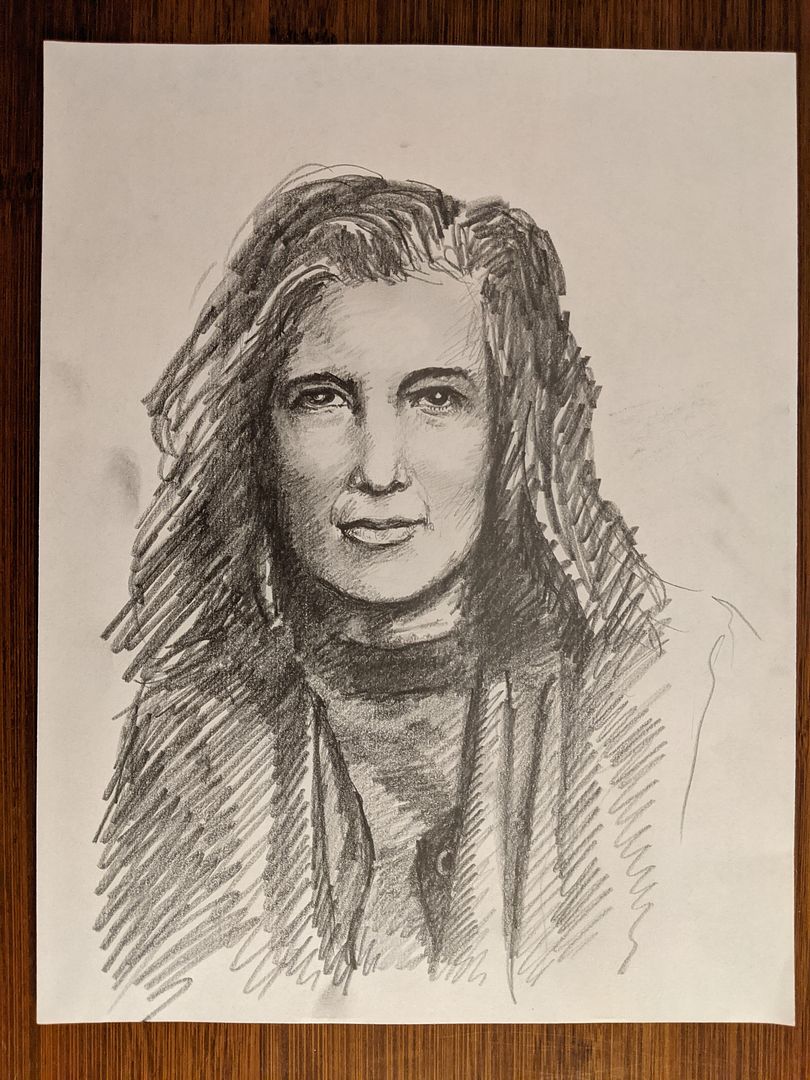Evening drawing
post by KatjaGrace · 2021-01-07T11:00:22.556Z · LW · GW · 3 commentsContents
3 comments
This evening I became tempted by a YouTube video of an artist painting a portrait, which led me to be tempted by another such video, and then more of them, and then by one of these artists’ websites, and then by my own pencils and paper. (I did not become tempted by YouTube videos advertising breaking news of some sort of crazy Trump riot, since I decided not to ‘check the internet’ until bed time).
Some observations on drawing:
- In my world, art supplies are a kind of archetype of a thing that is viscerally exciting vastly beyond its likelihood of being used (and even further beyond its likelihood of being used well). Like, look at this paper I got! (I did, extensively.) Think of the potential it holds! But actually, for now, it’s sitting under my bed.

- It is sometimes very hard to draw without poking my tongue out. Not in the sense that that without my tongue out, drawing is hard—I mean, while drawing, it seems infeasible to keep my tongue in my mouth. This feels natural and unsurprising, like how if you stand on one leg it is hard to not fall over, not like an epileptic seizure overcoming my tongue. But stated explicitly, it is pretty weird.
- It is also frequently very hard to draw without tilting my head from side to side. I first noticed this in high school art class, where I sat drawing and listening to the other students talk. One of them pointed out to another that looking around the room, students were tilting their heads to and fro all over the place. I also overheard an eye-opening discussion of how awesome it was that we were going to war in Iraq imminently, since that might clear space in the ranks of military helicopter pilots, allowing the excited student to fill it. Drawing and overhearing seem like good complementary activities.
- It’s hard to really get behind my attempts to draw well, because it doesn’t feel like they are leading anywhere. I would be more into it if it was part of a compelling plan to save the world. Perhaps I don’t really believe in leisure enough to wholeheartedly do it, and don’t disbelieve in it enough to work all of the time. Alas.
- Even without the world perhaps needing saving, drawing feels a bit pointless, since we have photography. But this doesn’t make sense: if you want to create an image of a scene, much better to draw it than to have to create it in real life then photograph it. For instance, most of the time, the scene you want probably isn’t realistic in the sense that it looks exactly like some bit of reality. How about computer graphics then? Yes, but even if arbitrary styles of image could be computer generated, doing this is itself basically just another kind of drawing—you still have to understand what patterns on the page would produce what in the minds of viewers, and you still have to invent ideas worth sending to the minds of viewers. It’s just the interface for putting down colors and shapes is different. That said, usually I just draw people, who might be better photographed, so it’s unclear that these thoughts apply. I feel like there are other good things about it that I haven’t captured. For instance, there are lots of great paintings just attempting to capture what is in front of them.
- I feel like I learn to draw faces better over the years via taking in insights about what they look like. For instance, ‘there is that little dip above the lip that you can fill with shadow’, or ‘eyes go half way down’, or the very early, ‘mustaches go under noses, not on top of them’.
- I basically can’t imagine faces, at least to anywhere near the degree of realism with which I can draw them (checking this now, I’m struggling to imagine a generic smiley face, though arguably succeeding). It’s interesting to me that a person can draw what they can’t imagine.
- I have the intuition that you can learn to draw more easily by looking at someone else’s drawing than you can by looking at a photograph of its subject. I decided to test this, and drew three people—one from a painting, one from a photograph, and one from my head. Can you guess which is which? (If so, how?)



3 comments
Comments sorted by top scores.
comment by Stuart Anderson (stuart-anderson) · 2021-01-07T13:32:42.259Z · LW(p) · GW(p)
Wasting supplies is all about learning that practice is important to improve skill, and perfection is a barrier to that. If I didn't walk out of a drawing class with 20+ drawings I was doing something wrong (not 20 good drawings, that would include warm up exercises and stuff that was just crap. I'd be happy if I got one good one).
Art (at least the kind most people do) is largely a kinaesthetic skill. That people have physical quirks as part of that isn't surprising. It takes time to learn how to avoid wasted effort when creating.
Art won't save the world, it will just make living in it tolerable.
Photography shows you what's there, drawing shows you how you see.
The great paintings pretty much died after photography came along. There's no inherent point in doing something a machine can do better. That being said, doing something by hand can be a reason. Representational work is very niche in the art world. It's generally considered the realm of craft (at best) and often held in contempt (because the art world is a pack of snobs that seem fixated on ugliness as a virtue).
The easiest way to improve your drawing is by extending your fundamental skills. The fastest way to do that is to make you stand up and work at an easel, use larger paper, step back and extend your arm straight, hold the implement like a scalpel rather than a writing pen, and fix your wrist and elbow so that the majority of the movement has to come from your shoulder. Using a knife to sharpen your pencil will help, using something less precise like charcoal or a graphite stick will help more. This is about teaching your body that drawing isn't writing.
comment by 9eB1 · 2021-01-09T15:05:01.458Z · LW(p) · GW(p)
My guess is head, painting photograph.
First (Head): Lacks the level of detail of the other two examples. A painting would also possibly be drawn from a reference, although I have no idea what even the style of painting you were referencing. The major distinction here is that the cheeks in the the second (painting) photo have mottling that suggests to me a better reference. The proportions also seem just a bit more exaggerated to me than the other two. The neck of the first one seems larger, and the shoulders have some asymmetry which is hard to interpret. It looks a bit as if her left shoulder is closer, but that doesn't exactly fit with the posture of her face.
Second (Painting): Basically by comparison with the others. It feels intermediate in realisticness.
Third (photograph): This seems like the photograph to me because it captures more detail than I would hold in my mind's eye, unlike the other two. In particular, crisp laugh lines and the detailed contrast of the eyes makes it feel like it had the most real-world reference. There is also the detail of the clothing, and I feel like most people wouldn't draw that if they were drawing a face from their imagination. (That's actually an argument for the first being painting and the second being head, though).
comment by Mary Chernyshenko (mary-chernyshenko) · 2021-01-07T14:29:11.640Z · LW(p) · GW(p)
We have geese and we take pictures of them, but I'd love to be able to draw them. There's so much poured volume and chiseled grace in an almost-monochrome shape. They grow - you can see the beaks getting longer in "adolescence", and they molt! Their heads sit at different angles on their necks, their stride can be purposeful or leisurely. And when there's snow on the ground and they are suddenly not the whitest thing around, their curves acquire a subtle metallic shine (at the base of the neck, at the invagination of an eye etc.).
I don't have the time, though, but geese are great.